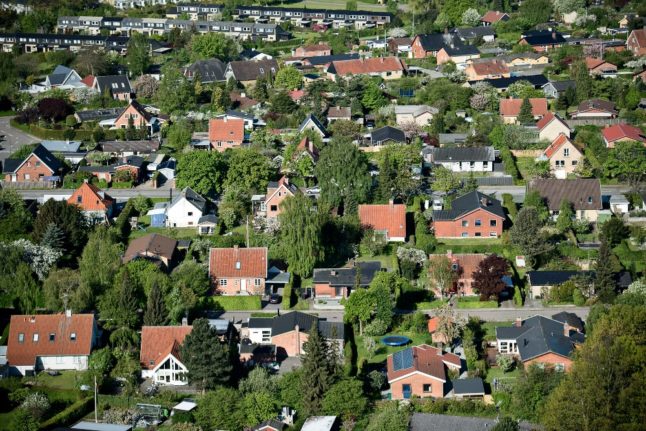Denmark is set to implement new laws from January 1st, 2024 that will impact the way property tax is calculated.
Around four in five homeowners will pay a lower rate of property tax under the new rules, while the remaining homeowners will be given subsidies intended to insure their property tax burden does not go up as a result of the change.
Although future homeowners could face a higher property tax bill once the new rules have taken effect, compared to if they had purchased their home before 2024, the changes in the way tax is calculated are designed not to increase the tax burden for existing homeowners.
READ ALSO:
- What do homeowners need to know about new Danish property tax rules?
- EXPLAINED: Denmark’s new property tax rules from 2024
From 2024 onwards, the two property taxes – property value tax rates (ejendomsværdiskattesatser) and land value tax (grundskyld) – are based on new valuations of properties which have been conducted since 2020 – and are still ongoing in some cases.
The new property tax rules are designed to keep property tax stable as new property valuations, on which taxes are calculated, come into effect.
In short, homeowners will from 2024 onwards pay property tax based on new valuations of their property.
For most people, the new valuations will be higher than the older ones, because house prices have generally risen in the intervening years. Houses and apartments in and around major cities have seen their values increase the most.
In response to the rising valuations, parliament adopted a new property tax law (ejendomsskattelov). The new law means that property value tax rates (ejendomsværdiskattesatser) and land value tax (grundskyld) will both be reduced from next year.
Existing homeowners will be given a tax deduction if the valuation of their property has increased so much that they owe more than before the reform, even after the lower rate is applied. The purpose of the subsidy is to ensure homeowners don’t pay more in property tax in 2024 than they did on the same home under the old rules. The deduction is applied to their property tax annually for as long as they own the home.
Where can I see the new valuations?
The new assessments will not be sent directly to homeowners but can be accessed from September 12th at the portal Vurderingsportalen.dk, which is part of the Danish Property Assessment Agency (Vurderingsstyrelsen).
Enter your address in the field “søg på adresse”. The preliminary valuation will then be displayed.
Most homeowners will find that the displayed preliminary valuations are higher than the most recent tax valuations used for their property. But the lower tax rates will mean lower property tax for four out of five homeowners, even if their new valuations are higher than previous ones.
How can I calculate property tax based on the preliminary valuations?
A calculator on the Vurderingsportalen website displays an estimate – an “idea”, to use the words of the valuations agency itself – of what your property tax will be in 2024 based on the existing preliminary valuations.
Similar to when looking up the valuations, the calculator is easy to use. Simply enter your address into the “søg på adresse” field and the page will display the two property tax types – property value tax rates (ejendomsværdiskattesatser) and land value tax (grundskyld) – and the combined annual property tax.
These figures are the maximum estimated property tax for 2024 and do not take into account any tax subsidy which you might be eligible for.
What else do I need to know?
As mentioned above, you qualify for a tax subsidy if your property tax increases as a result of the new rules for property tax in 2024.
This can happen if the valuation of the property has increased so much that the tax is higher than before the reform, even after the lower rate is applied. Houses and apartments in and around major cities, particularly Copenhagen, have seen their values increase the most.
The calculator does not take the subsidy into account, meaning it might show a higher tax than you currently pay in these cases. You can read about the subsidies in more detail (in Danish) on the valuation agency’s website.
The valuations released on Tuesday are preliminary. Final property tax rates for 2024 will depend on assessments of property and land valuations being completed by authorities.
That is expected to be done by November, to be included in Denmark’s preliminary tax returns or forskudopgørelser.
This means the land value tax (grundskyld) will also be included on preliminary and annual tax returns. This tax was collected by municipalities under the old rules, but now comes under the annual tax return and will therefore appear in a different place on your tax information.




 Please whitelist us to continue reading.
Please whitelist us to continue reading.
You mentioned “Similar to when looking up the valuations, the calculator is easy to use.” what is the link for the calculator?
Hi Ray,
A link to the calculator has now been added to the text of the article, you can also find it here. Apologies for not including it in the original version.
Best wishes, Mike